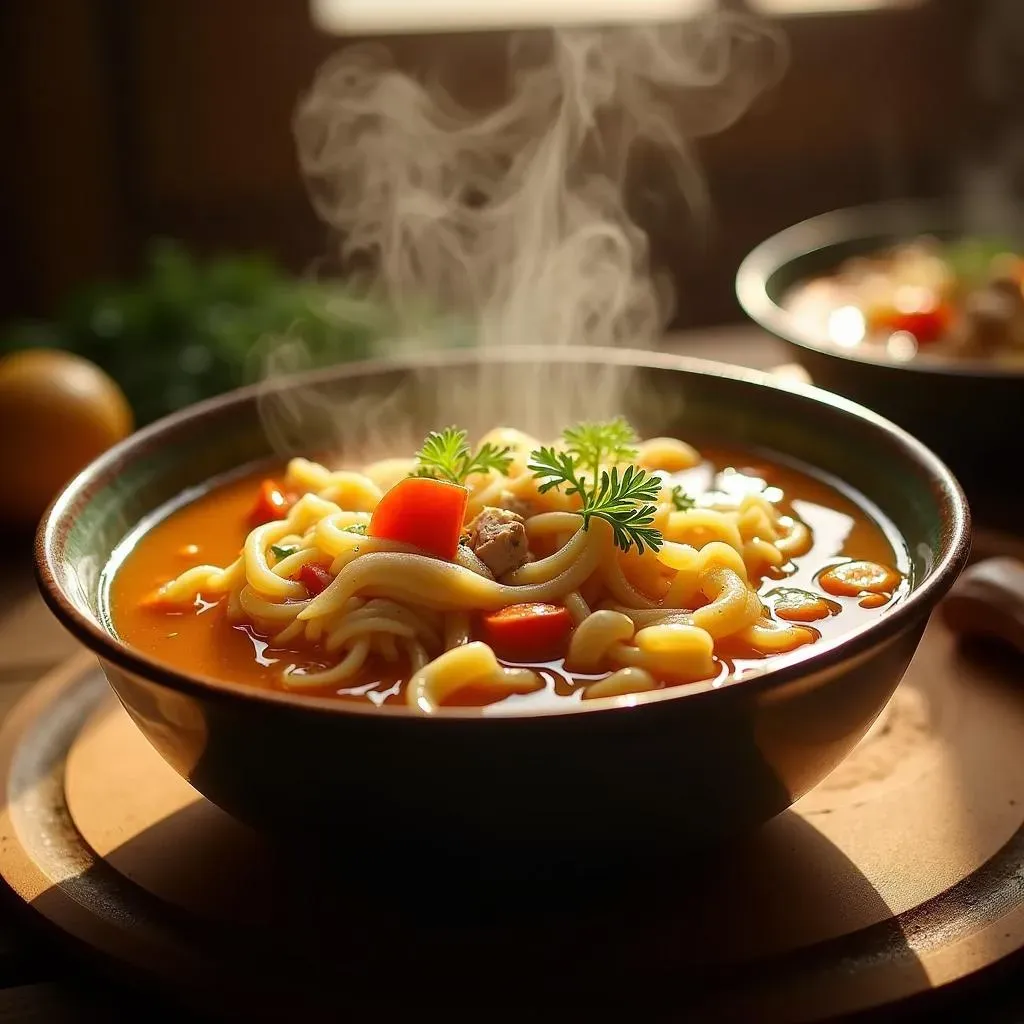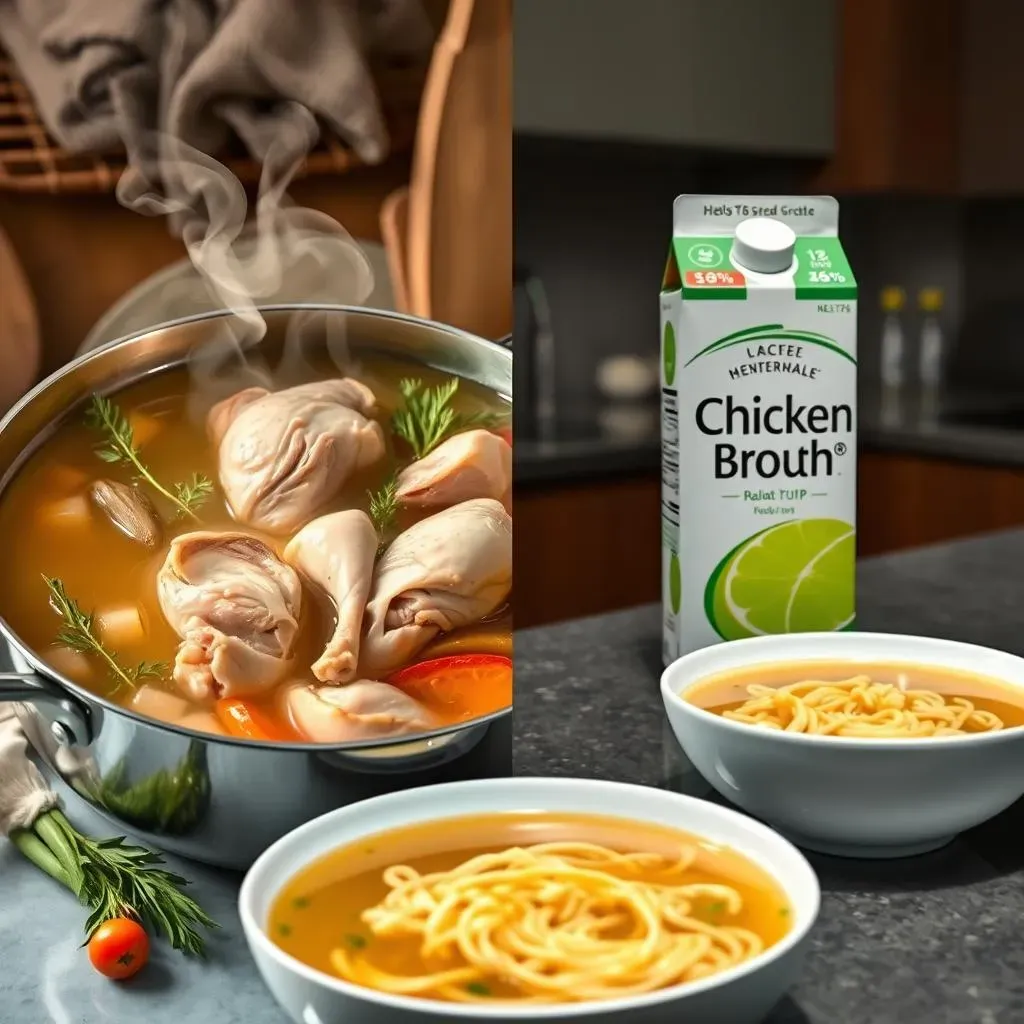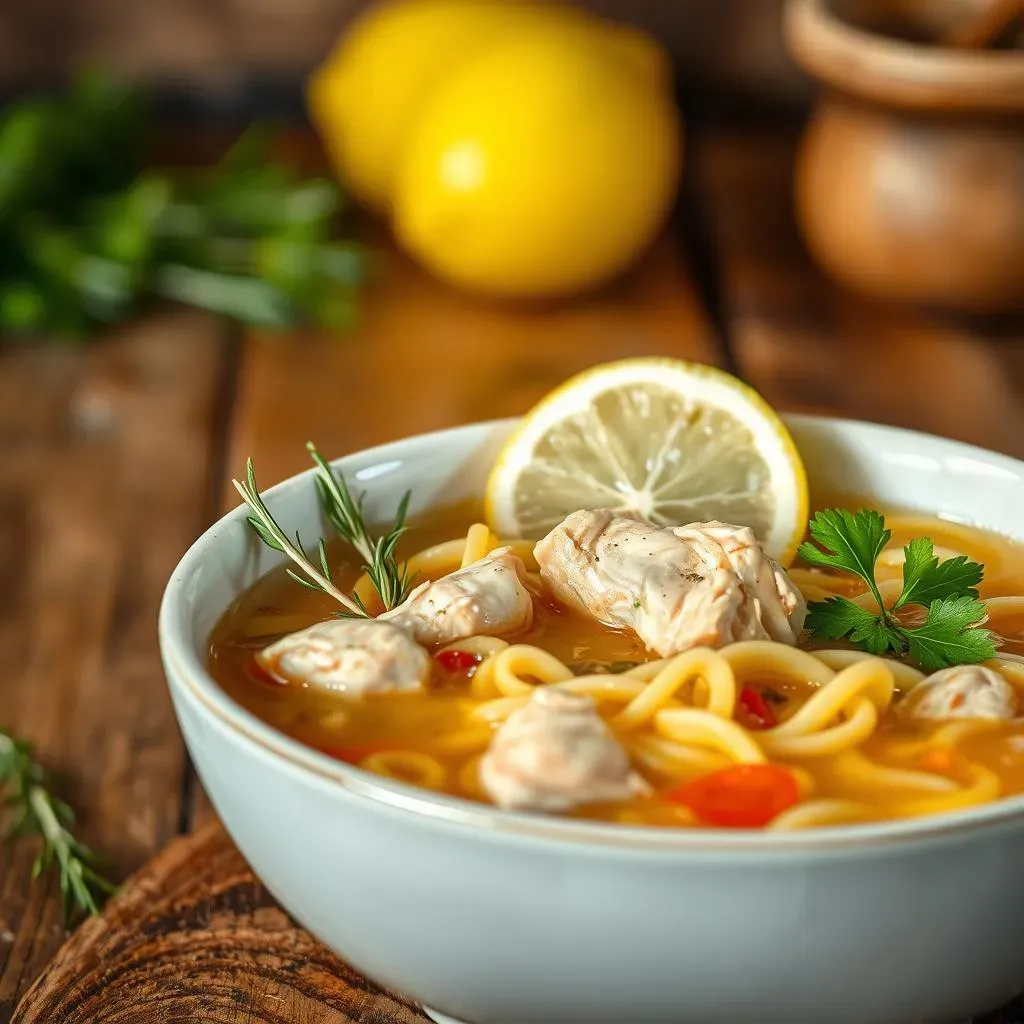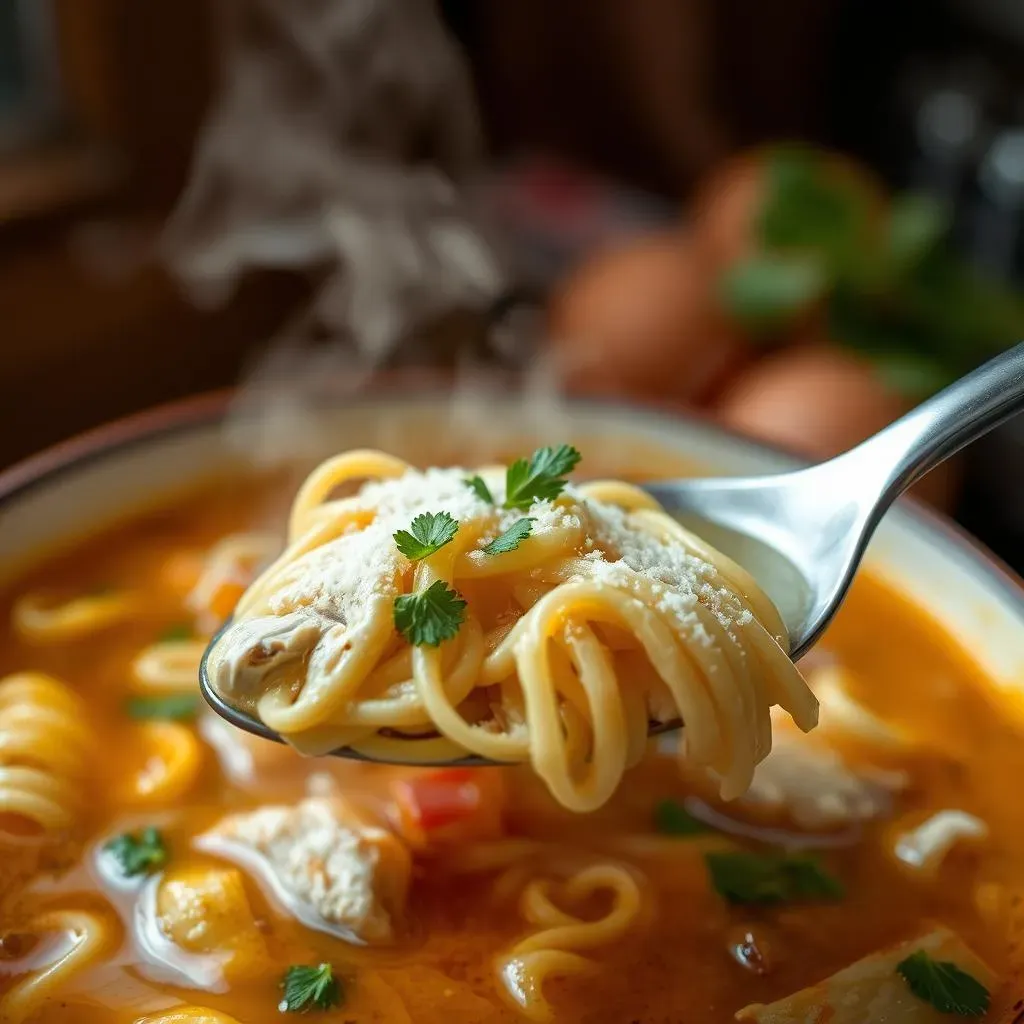Table of Contents
Ever find yourself staring at a shelf full of broths, wondering what broth is best for chicken noodle soup? You're not alone. That comforting bowl of soup, the one that warms you from the inside out, it all begins with the broth. This article isn't just about picking a can; it's about understanding what makes a truly great broth for your chicken noodle soup. We'll explore the differences between homemade and store-bought options, uncover secrets to boost flavor, and even consider some creative twists. Whether you're a seasoned soup maker or just starting out, get ready to learn how to make the most of your broth and take your chicken noodle soup to the next level, because the broth is the base of your soup, so let's make it count. We'll discuss everything from making your own stock to what to look for in a store-bought carton, ensuring each spoonful is packed with flavor and goodness.
The Foundation: Understanding Broth for Chicken Noodle Soup

The Foundation: Understanding Broth for Chicken Noodle Soup
What Makes a Good Broth?
Okay, so you're diving into the world of chicken noodle soup, and that's fantastic! But before we get to noodles and veggies, let's talk broth. It's the unsung hero, the liquid gold that ties everything together. Think of it like the foundation of a house; a wobbly base means a wobbly soup. A good broth isn't just salty water; it's a flavorful concoction made from bones, veggies, and time. The best broths have a rich, savory taste and that comforting aroma that makes you want to curl up with a big bowl. When you taste a great broth, you can feel it in your soul.
The key to a good broth is extracting all that deliciousness from the ingredients. We’re not just boiling water here, we are on a mission to get every bit of flavor out of those bones and veggies. This extraction is what gives us that depth of flavor that makes homemade broth so much better than store-bought sometimes. The gelatin from the bones gives it a silky feel and adds richness. The veggies add layers of flavor, and the herbs and spices, well they just bring it all together. It's like a symphony of flavors, and you're the conductor.
Broth Component | Contribution |
|---|---|
Bones (Chicken) | Richness, gelatin, depth of flavor |
Vegetables (Onions, Carrots, Celery) | Sweetness, earthiness, aromatic notes |
Herbs and Spices | Complexity, warmth, aroma |
Broth vs. Stock: What's the Difference?
Now, here's a question that might have you scratching your head: what's the difference between broth and stock? People use them interchangeably, but they aren't exactly the same thing. Think of stock as the more intense, flavorful cousin of broth. Stock is typically made with bones, often roasted, and simmered for a long time to extract all that good stuff. Broth, on the other hand, is usually made with more meat and veggies, and it's simmered for a shorter time. The result is that stock is richer and has more gelatin, while broth is lighter and more delicate.
For chicken noodle soup, you can use either stock or broth. I personally love the depth of flavor that stock brings, but a good quality chicken broth can work just as well. If you are using broth, make sure it’s not just salty water, look for a low-sodium broth, that way you can control the saltiness of your soup, and if you are making your broth from scratch, great! You have total control of the flavor. It’s like being the master of your own soup universe, and that’s a pretty cool feeling.
Homemade vs. StoreBought Broth: Which is Best for Chicken Noodle Soup?

Homemade vs. StoreBought Broth: Which is Best for Chicken Noodle Soup?
The Allure of Homemade Broth
Let's be real, making your own broth is like going on a mini culinary adventure. You're in charge of every single ingredient, from the chicken bones to the veggies and herbs. It's a hands-on process that lets you control the flavor profile and salt levels, it's like you are the boss of your own broth. Plus, there's something incredibly satisfying about using leftovers, like a rotisserie chicken carcass, to create something new and delicious. It's like turning trash into treasure, but the treasure is soup. The aroma alone is enough to make you feel like a kitchen wizard. When you simmer those bones and veggies, your whole house smells like a cozy hug.
But homemade broth isn't just about the great flavor; it's also about what you're not putting in. No weird preservatives, no mystery ingredients, just pure, wholesome goodness. It’s also a great way to reduce waste and use those leftover veggies that are hanging out in your fridge. You can get creative and add different herbs and spices to customize the flavor to your liking. Making your own broth takes time, but the result is worth it. It’s like giving your soup a superpower boost of flavor and nutrition, and who doesn’t want that?
The Convenience of Store-Bought Broth
Okay, let's face it, not everyone has the time or energy to make broth from scratch, and that's totally fine. Store-bought broth is a lifesaver when you need a quick and easy soup solution. It's convenient, readily available, and comes in various options, from low sodium to organic. It's like having a ready-to-go soup base at your fingertips. The key is to choose a good quality broth. Avoid the ones that are loaded with sodium and artificial flavors. Look for brands that use real ingredients and have a good flavor profile. You don’t want your soup to taste like salty water.
When picking a store-bought broth, think about what you need. If you are watching your salt intake, go for a low-sodium option. If you want a richer flavor, try a bone broth. Some brands even offer organic options for those who prefer them. It’s like having a variety of tools in your kitchen, each designed for a specific job. Store-bought broth is a great option when you are short on time, but want to make a delicious soup. It’s like having a secret weapon in your pantry, ready to save the day.
Factor | Homemade Broth | Store-Bought Broth |
|---|---|---|
Flavor Control | Complete control over ingredients and flavor | Limited control, depends on the brand |
Time | Requires time and effort to prepare | Quick and convenient |
Ingredients | Fresh, customizable ingredients | May contain preservatives and additives |
Flavor Boosters: Enhancing Your Chicken Noodle Soup Broth

Flavor Boosters: Enhancing Your Chicken Noodle Soup Broth
Alright, so you've got your broth, whether it's homemade or store-bought, but you're thinking, "How can I make this even better?" That's where flavor boosters come in. These are the secret weapons that can take your chicken noodle soup from good to absolutely amazing. Think of them as the extra layers of flavor that make your soup sing. It's like adding the perfect seasoning to a dish, it just elevates the whole thing. These boosters aren't about complicated techniques; they're about simple additions that make a big difference. We're talking about herbs, spices, and other ingredients that can transform your broth into a flavor explosion.
One of the easiest ways to boost flavor is with fresh herbs. Thyme, rosemary, and parsley are classic choices that add a lovely aromatic touch. You can also try adding a bay leaf or two while the soup simmers. These herbs release their flavors slowly, creating a more complex and interesting broth. If you are using dried herbs, make sure you use half the amount of fresh herbs, since they have a more concentrated flavor. It’s like giving your soup a botanical makeover, and the result is a broth that’s both comforting and invigorating. A squeeze of lemon or lime can add a touch of brightness and acidity, which can really make the other flavors pop. It's like a little bit of sunshine in your bowl.
Flavor Booster | How to Use It | Flavor Profile |
|---|---|---|
Fresh Herbs (Thyme, Rosemary, Parsley) | Add during simmering or fresh at the end | Aromatic, fresh, earthy |
Bay Leaf | Add during simmering, remove before serving | Subtle, earthy, slightly floral |
Lemon or Lime Juice | Squeeze in at the end | Bright, acidic, zesty |
Beyond Chicken: Broth Variations and Creative Twists for Chicken Noodle Soup

Beyond Chicken: Broth Variations and Creative Twists for Chicken Noodle Soup
Vegetarian and Vegan Broth Options
Alright, let's talk about shaking things up a bit. What if you're not feeling chicken? No worries! There are tons of ways to make a killer broth for your noodle soup that doesn't involve any clucking. A good vegetable broth is a fantastic base, and it's super versatile. You can build it up with all sorts of veggies like mushrooms, carrots, celery, and onions. Think of it like creating a veggie orchestra, each one bringing its own unique sound to the mix. Roasting the veggies before simmering them will give you a deeper, richer flavor. It's like giving your broth a smoky, caramelized twist.
For a vegan option, you can use vegetable broth or get creative with other flavors. Try adding some dried shiitake mushrooms for an umami boost, or a little bit of soy sauce for saltiness. A touch of ginger and garlic can also add a lovely warmth and aroma. It's like giving your soup a global flavor adventure. You can also add some nutritional yeast for a cheesy flavor, or a splash of coconut milk for a creamy texture. It’s all about experimenting and finding what you like, and that's the fun of it.
Creative Broth Twists
Now, let’s get a little wild. Who says chicken noodle soup has to be boring? You can totally play around with the broth to create unique and interesting flavors. One idea is to use a seafood broth as a base. The briny flavor can be a real game-changer. You can use a clam broth or a shrimp broth, depending on what you like. It’s like giving your soup a seaside vacation, and who wouldn’t love that?
Another fun twist is to add some spice. A little bit of chili garlic paste, or some sriracha, can add a nice kick to your soup. It’s like giving your soup a spicy personality. You can also try adding some coconut milk for a creamier texture and a touch of sweetness. Or, if you're feeling adventurous, add a splash of miso paste for a salty, umami-rich broth. It's like giving your soup a surprise party, and your taste buds are the guests of honor. The key is to have fun and experiment with different flavors and find what you like.
Broth Variation | Flavor Profile | Creative Twist |
|---|---|---|
Vegetable Broth | Earthy, savory, customizable | Roast veggies for deeper flavor |
Seafood Broth | Briny, oceanic, unique | Add a touch of lemon for brightness |
Spicy Broth | Warm, zesty, bold | Add coconut milk for creaminess |
